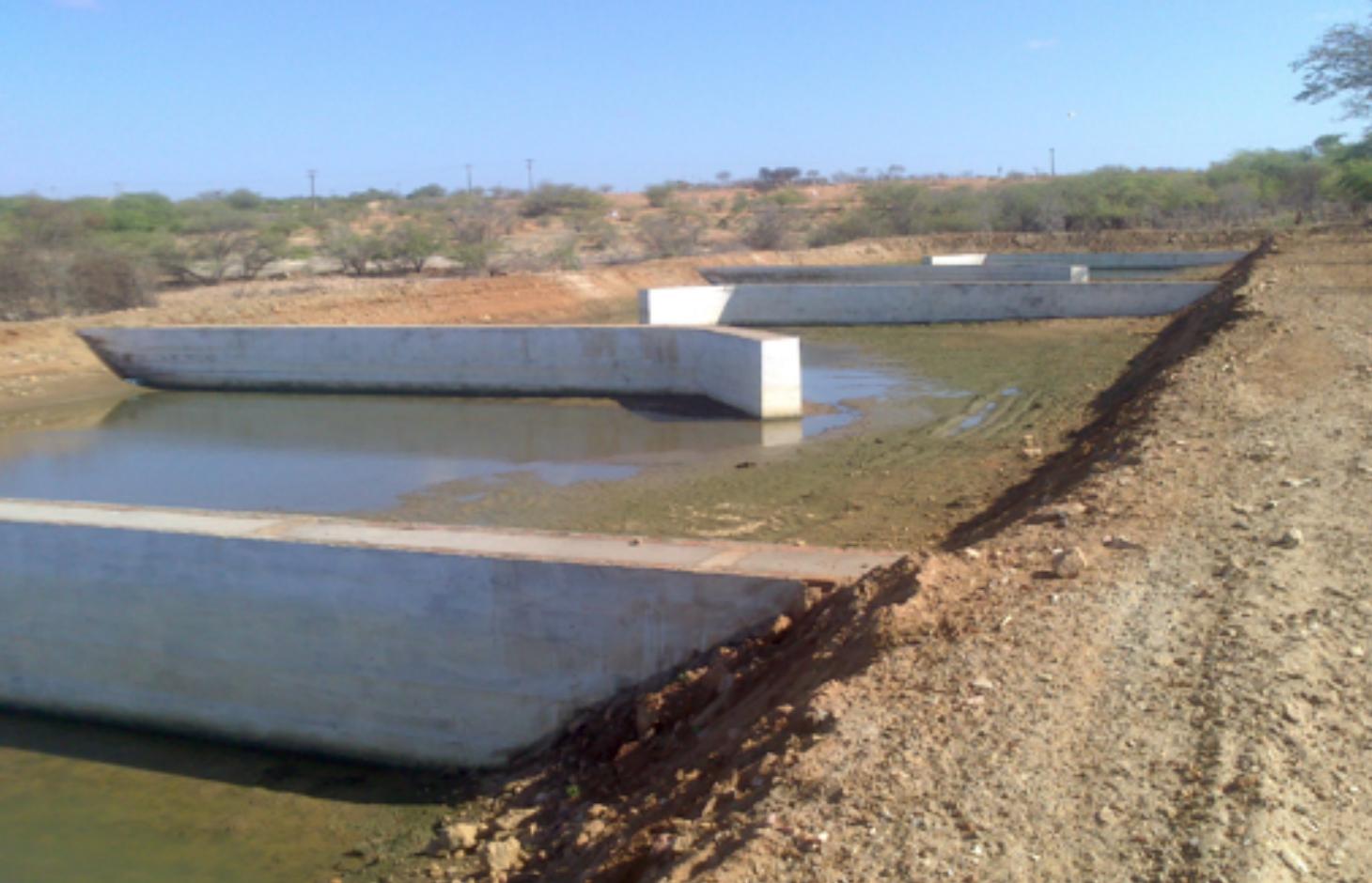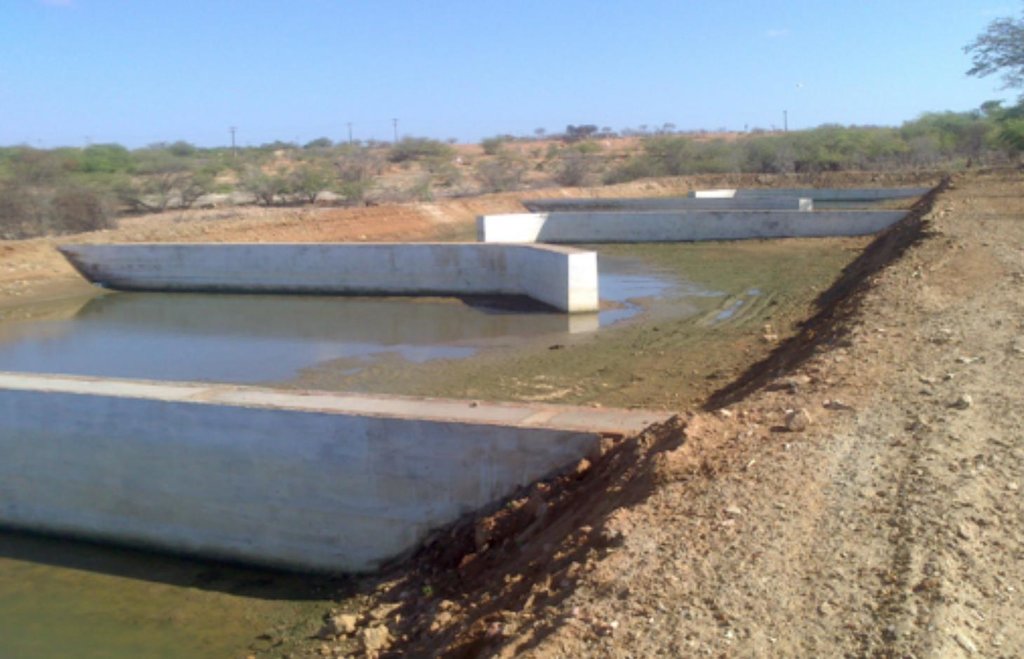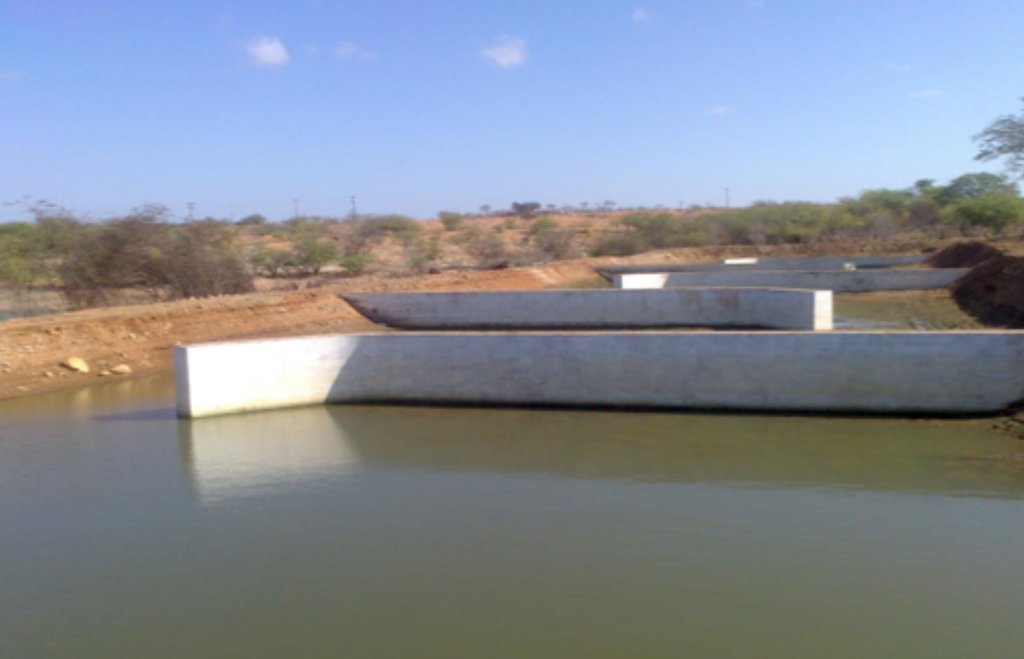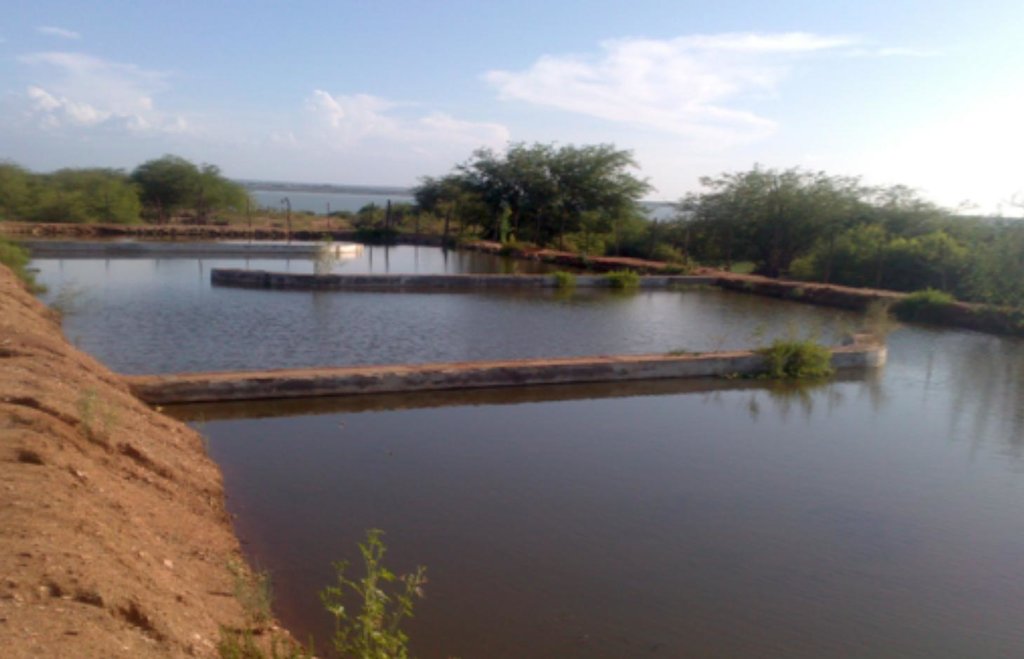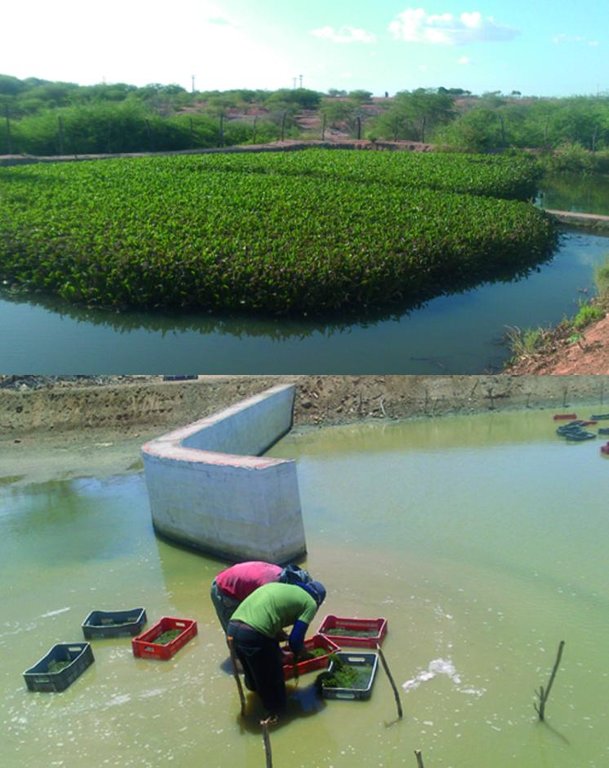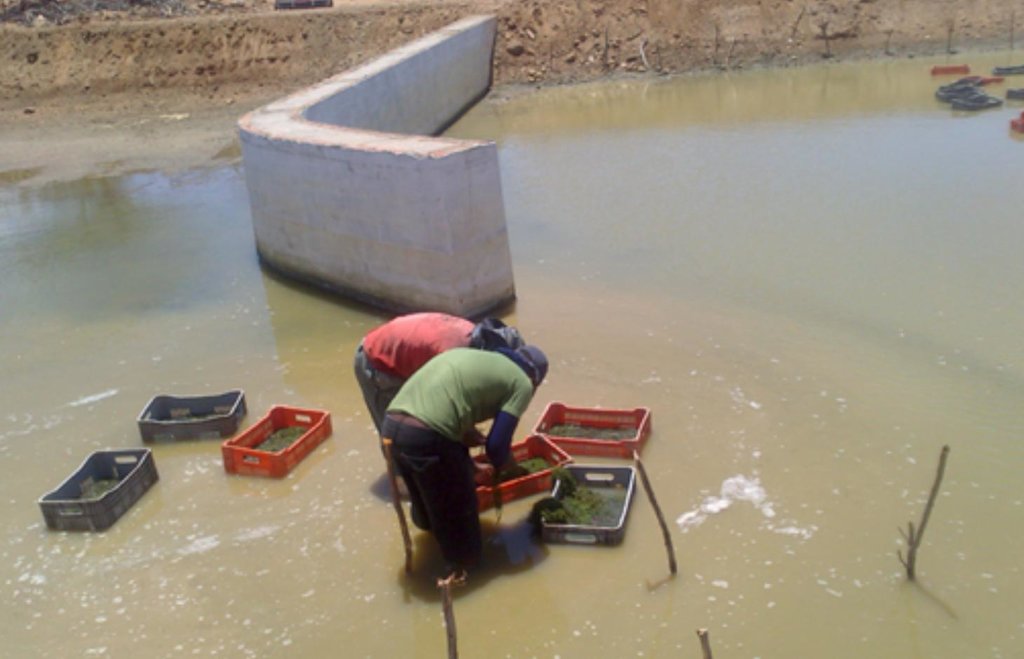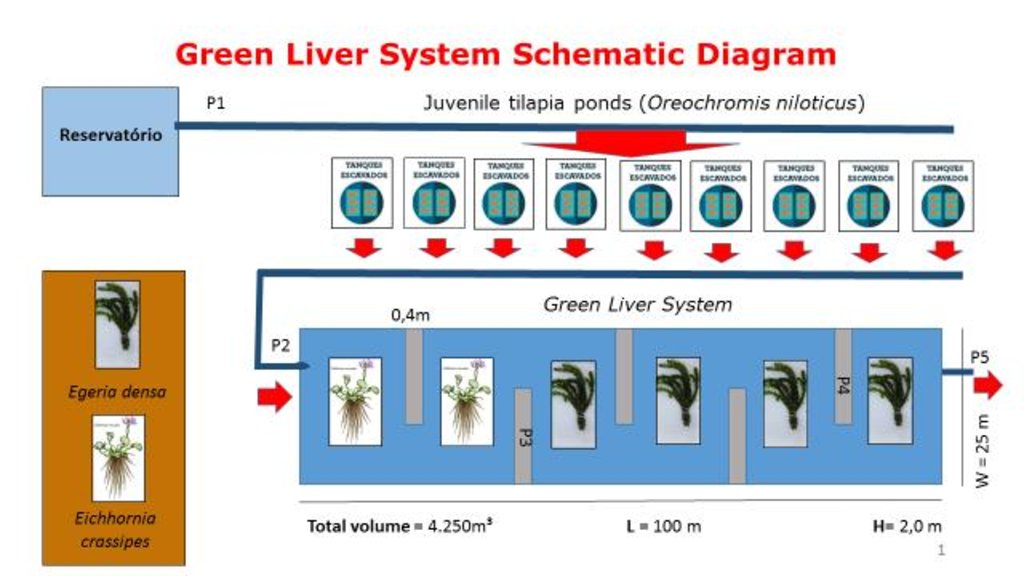The “Green Liver System”: eco-friendly water purification [บราซิล]
- ผู้สร้างสรรค์:
- การอัพเดท:
- ผู้รวบรวม: Marianna Siegmund-Schultze
- ผู้เรียบเรียง: –
- ผู้ตรวจสอบ: Fabian Ottiger
Fitorremediação (Portuguese)
technologies_1710 - บราซิล
- บทสรุปทั้งหมดในรูปแบบของ PDF
- บทสรุปทั้งหมดในรูปแบบของ PDF เพื่อพิมพ์
- บทสรุปทั้งหมดในรูปหน้าเว็บ
- บทสรุปทั้งหมด (ไม่มีการจัดเรียง)
- The “Green Liver System”: eco-friendly water purification : 7 มีนาคม 2019 (public)
- The “Green Liver System”: eco-friendly water purification : 29 เมษายน 2017 (inactive)
- The “Green Liver System”: eco-friendly water purification : 20 มีนาคม 2017 (inactive)
- The “Green Liver System”: eco-friendly water purification: 8 มีนาคม 2017 (inactive)
- The “Green Liver System”: eco-friendly water purification: 7 มีนาคม 2017 (inactive)
ดูส่วนย่อย
ขยายทั้งหมด ย่อทั้งหมด1. ข้อมูลทั่วไป
1.2 รายละเอียดที่ติดต่อได้ของผู้รวบรวมและองค์กรที่เกี่ยวข้องในการประเมินและการจัดเตรียมทำเอกสารของเทคโนโลยี
ผู้เชี่ยวชาญ SLM:
ผู้เชี่ยวชาญ SLM:
ชื่อของโครงการซึ่งอำนวยความสะดวกในการทำเอกสารหรือการประเมินเทคโนโลยี (ถ้าเกี่ยวข้อง)
Book project: Making sense of research for sustainable land management (GLUES)ชื่อขององค์กรซึ่งอำนวยความสะดวกในการทำเอกสารหรือการประเมินเทคโนโลยี (ถ้าเกี่ยวข้อง)
Leibniz-Institut für Gewässerökologie und Binnenfischerei (IGB) - เยอรมนีชื่อขององค์กรซึ่งอำนวยความสะดวกในการทำเอกสารหรือการประเมินเทคโนโลยี (ถ้าเกี่ยวข้อง)
Potsdam-Institut für Klimaforschung (PIK) - เยอรมนีชื่อขององค์กรซึ่งอำนวยความสะดวกในการทำเอกสารหรือการประเมินเทคโนโลยี (ถ้าเกี่ยวข้อง)
Universität Hohenheim - เยอรมนีชื่อขององค์กรซึ่งอำนวยความสะดวกในการทำเอกสารหรือการประเมินเทคโนโลยี (ถ้าเกี่ยวข้อง)
Technische Universität Berlin (Technische Universität Berlin) - เยอรมนีชื่อขององค์กรซึ่งอำนวยความสะดวกในการทำเอกสารหรือการประเมินเทคโนโลยี (ถ้าเกี่ยวข้อง)
Hochschule für Technik und Wirtschaft Dresden (HTW Dresden) - เยอรมนี1.3 เงื่อนไขการใช้ข้อมูลที่ได้บันทึกผ่านทาง WOCAT
ผู้รวบรวมและวิทยากรหลักยอมรับเงื่อนไขเกี่ยวกับการใช้ข้อมูลที่ถูกบันทึกผ่านทาง WOCAT:
ใช่
2. การอธิบายลักษณะของเทคโนโลยี SLM
2.1 การอธิบายแบบสั้น ๆ ของเทคโนโลยี
คำจำกัดความของเทคโนโลยี:
Water purification using macrophytes to treat effluent from fish farming.
2.2 การอธิบายแบบละเอียดของเทคโนโลยี
คำอธิบาย:
The “Green Liver System” uses aquatic plants, established in artificial wetlands, to remove, transfer, stabilize or eliminate pollutants in wastewater from fish farms. The use of large quantities of feed in aquaculture, along with the application of antibiotics, hormones and probiotics, has negative impacts on aquatic ecosystems due to the introduction of nitrogen, phosphorous and drug residues into the system. The Green Liver System is a form of phytoremediation (phyto = plant and remediate = correct) that uses a range of plants to decompose, extract, or hold contaminants present in soils and waters. This technology has been considered as an innovative alternative and a low cost option compared to others used in contaminated sites - like membrane bioreactors, upflow anaerobic sludge blanket (UASB), and others.
Purpose of the Technology: The plants selected for use in Green Liver System artificial wetlands depend on the pollutant to be removed. Research shows physiological differences between species, which need to be taken into account when planning wastewater treatments. Ideal plants for phytoremediation need: a) a fast growth rate; b) high biomass production; c) long rooting systems; d) easy maintenance/pruning; e) to be able to persists, and f) to have the ability to store trace metals within specific parts which can be later removed.
Establishment / maintenance activities and inputs: The Green Liver System uses aquatic macrophytes, which extract contaminants from the water, store them, or even metabolize them - transforming them into less toxic or harmless products. In the case of Eichhornia crassipes, most of the solids in suspension are removed by sedimentation or by adsorption in the root system. The dense coverage of these plants reduces the mixing effect of the wind, as well as minimizing thermal mixture. Shading by the plants restricts algal growth and the root system prevents horizontal movement of particulate material. In this way, particles are removed from the wastewater and microorganisms associated with the plants’ rhizosphere slowly decompose. Many organisms can be used in biodegradation: these include bacteria and fungi as well as plants, and the efficiency of one or the other depend, in many cases, on the molecule structure and of the presence of enzymes that are effective in degrading the pollutant.
Natural / human environment: The fish farm used as an example here is located on the margins of the Itaparica reservoir in Brazil. There are dozens of excavated tanks used to produce tilapia (Oreochromis niloticus) and “tambaqui” (Colossoma macropomum) fingerlings and juvenile fish. As well as these tanks, there are many net enclosures installed in the reservoir where the fishes are reared to maturity. Part of the wastewater from the excavated tanks is released into a stabilization lagoon, and the remainder goes to the Green Liver System. The effluent is enriched with spare feed, and excreta from the fish, which includes drug residues. If not treated, this may cause eutrophication because of its mineral richness. The Green Liver System consists of an excavated tank of 100m x 20m x 2m in size. The tank is subdivided into six parts: two planted to Eichhornia crassipes and four to Egeria densa. A mesh barrier stops fish from being flushed into the tank. Regular monitoring of the physical, chemical and biological parameters is required to control environmental fluctuations.
2.3 รูปภาพของเทคโนโลยี
2.5 ประเทศภูมิภาค หรือสถานที่ตั้งที่เทคโนโลยีได้นำไปใช้และได้รับการครอบคลุมโดยการประเมินนี้
ประเทศ:
บราซิล
ภูมิภาค/รัฐ/จังหวัด:
Pernambuco
ข้อมูลจำเพาะเพิ่มเติมของสถานที่ตั้ง :
Vila do Coité, Itacuruba
Map
×2.6 วันที่การดำเนินการ
ถ้าไม่รู้ปีที่แน่นอน ให้ระบุวันที่โดยประมาณ:
- น้อยกว่า 10 ปี (ไม่นานนี้)
2.7 คำแนะนำของเทคโนโลยี
ให้ระบุว่าเทคโนโลยีถูกแนะนำเข้ามาอย่างไร:
- ในช่วงการทดลองหรือการทำวิจัย
ความคิดเห็น (ประเภทของโครงการ เป็นต้น) :
Construction took place in 2013, building on earlier experiences of the principal scientist, for instance in South Korea.
3. การจัดประเภทของเทคโนโลยี SLM
3.2 ประเภทของการใช้ที่ดินในปัจจุบันที่ได้นำเทคโนโลยีไปใช้

ทางน้ำ แหล่งน้ำ พื้นที่ชุ่มน้ำ
แสดงความคิดเห็น:
Major land use problems (compiler’s opinion): The Itaparica reservoir was completed in 1988 to generate hydropower. About 40,000 people were compulsorily relocated. The construction of the reservoir had interrupted fish movement, leading to a shortage of fish, making aquaculture a viable and profitable alternative, and current law allows this. However excess feed and excreta of fish, partly containing drug residues, add nutrients and pollute water. ECONOMIC ASPECTS: The agricultural economy of this semi-arid region is characterized by pastoral activities, as well as the cultivation of crop species resistant to drought, such as cotton, corn (maize), beans, and cassava in humid areas. Irrigation from the reservoir was potentially possible but investments in aquaculture proved more profitable. In general, the commercial companies involved do not treat effluent, leading to pollution. Even though monitoring is mandatory, almost nobody does it, nor do they make substantial efforts to purify the effluent.
Major land use problems (land users’ perception): There are several conflicts over water and related land use in the region. Some people say the water quality in the reservoir is good (and use it directly for drinking), others report ill-health especially during times of low water levels. Commercial aquaculture primarily produces tilapia. Invariably, some tilapia escape from their net cages and take over from other local species. The hydroelectric company manages the reservoir according to national needs in electricity – thus sudden water level fluctuations are frequent. Commercial aquaculture and associated land use dominate the shoreline, preventing access for artisanal fishermen to their traditional fishing grounds.
Future (final) land use (after implementation of SLM Technology): Other: Ow: Waterways, drainage lines, ponds, dams
Constraints of transition land, fallow or sporadicall used by roaming livestock (mainly goats) (area in between the land-based aquaculture and the lake)
ถ้าการใช้ที่ดินมีการเปลี่ยนแปลงเนื่องมาจากการนำเทคโนโลยีไปปฏิบัติใช้ ให้ระบุการใช้ที่ดินก่อนนำเทคโนโลยีไปปฏิบัติใช้:
Grazing land: Ge: Extensive grazing land
3.3 ข้อมูลเพิ่มเติมเกี่ยวกับการใช้ที่ดิน
การใช้น้ำของที่ดินที่มีการใช้เทคโนโลยีอยู่:
- น้ำฝนร่วมกับการชลประทาน
จำนวนของฤดูเพาะปลูกต่อปี:
- 1
ระบุ:
Longest growing period from month to month: all year due to tropical climate
3.4 กลุ่ม SLM ที่ตรงกับเทคโนโลยีนี้
- การจัดการน้ำผิวดิน (น้ำพุ แม่น้ำทะเลสาบ ทะเล)
- การป้องกัน / การจัดการพื้นที่ชุ่มน้ำ
- Water purification
3.5 กระจายตัวของเทคโนโลยี
แสดงความคิดเห็น:
Total area covered by the SLM Technology is 2 m2.
The reservoir is 100m long and 20 m wide, with a depth of 1.7 m, but the area may be larger depending on the volume of effluent to be treated. The whole area comprises the fish ponds.
3.6 มาตรการ SLM ที่ประกอบกันเป็นเทคโนโลยี

มาตรการอนุรักษ์ด้วยวิธีพืช
- V5: อื่นๆ

มาตรการอนุรักษ์ด้วยโครงสร้าง
- S5: เขื่อน ชั้นดินที่แน่นแข็งบ่อน้ำ
แสดงความคิดเห็น:
Main measures: vegetative measures
Secondary measures: structural measures
Specification of other vegetative measures: macrophytes, different species
Type of vegetative measures: in blocks
3.7 รูปแบบหลักของการเสื่อมโทรมของที่ดินที่ได้รับการแก้ไขโดยเทคโนโลยี

การเสื่อมโทรมของน้ำ
- Hp (Decline of surface water quality): การลดลงของคุณภาพน้ำที่ผิวดิน
แสดงความคิดเห็น:
Main type of degradation addressed: Hp: decline of surface water quality
Main causes of degradation: deforestation / removal of natural vegetation (incl. forest fires) (slash-and-burn practices), over-exploitation of vegetation for domestic use (firewood and charcoal making), overgrazing (free roaming run-wild donkeys, and small ruminants), urbanisation and infrastructure development (construction works near to body bodies (not respecting conservation areas)), discharges (point contamination of water) (indiscriminate disposal of effluents; excrements, drugs and surplus feed from fishes in net-cages), over abstraction / excessive withdrawal of water (for irrigation, industry, etc.) (abstraction of water from the reservoir without prior registration, not holding water use permits), change in temperature (supposed to be climate change induced), change of seasonal rainfall (high variability in semi-arid regions rather normal; though rainfall appears to fall in shorter periods), droughts (recurrent droughts are "normal", they appear to last for longer periods), poverty / wealth (limited livelihood sources in the rather remote municipality), inputs and infrastructure: (roads, markets, distribution of water points, other, …) (spoilage and low quality), education, access to knowledge and support services (often little value attached to natural resources), war and conflicts (conflicts among two families; conflicts among indigenous and commercial users), governance / institutional (restricted enforcement of existing rules; clientelism)
Secondary causes of degradation: soil management, crop management (annual, perennial, tree/shrub), industrial activities and mining, release of airborne pollutants (urban/industry…), disturbance of water cycle (infiltration / runoff), Heavy / extreme rainfall (intensity/amounts), wind storms / dust storms, floods, other natural causes (avalanches, volcanic eruptions, mud flows, highly susceptible natural resources, extreme topography, etc.) specify, population pressure, land tenure, labour availability
3.8 การป้องกัน การลดลง หรือการฟื้นฟูความเสื่อมโทรมของที่ดิน
ระบุเป้าหมายของเทคโนโลยีกับความเสื่อมโทรมของที่ดิน:
- ลดความเสื่อมโทรมของดิน
แสดงความคิดเห็น:
Main goals: mitigation / reduction of land degradation
4. ข้อมูลจำเพาะด้านเทคนิค กิจกรรมการนำไปปฏิบัติใช้ ปัจจัยนำเข้า และค่าใช้จ่าย
4.1 แบบแปลนทางเทคนิคของเทคโนโลยี
ผู้เขียน:
Stephan Pflugmacher-Lima, TUB, Faculty VI Planning Building Environment; Sekr. A1; Str des 17. Juni 152; 10623 Berlin; Germany
4.2 ข้อมูลจำเพาะด้านเทคนิคและการอธิบายแบบแปลนทางเทคนิค
The constructed wetland termed a “Green Liver System” is 100m x 25m x 2.0m in size. It is divided into six parts (one third of the tank planted with Eichhornia crassipes the remainder with Egeria densa). The average outflow during the period was 1,800 m³/h. Point P1 is the catchment from the reservoir. Point P2 is the inlet that receives the discharge of effluent from 10 ponds with juvenile tilapia (Oreochromis niloticus). Point P3 is the stage after the treatment with Eichhornia crassipes. Point P4 is the stage of the treatment with Egeria densa. Point P5 is the outlet into a containment basin.
Location: Itacuruba. Pernambuco
Date: 2013
Technical knowledge required for field staff / advisors: high (It is a sophisticated system which requires close observation and monitoring. Site-specific adaptation might be necessary (for instance fencing to avoid goats entering the area).)
Technical knowledge required for land users: high (It is a sophisticated system which requires close observation and monitoring. It will be easier with some experience.)
Main technical functions: improvement of water quality, buffering / filtering water
In blocks
Vegetative material: O : other
Number of plants per (ha): 250000
Other species: Egeria densa; Eichhornia crassipes
Dam/ pan/ pond
Depth of ditches/pits/dams (m): 1.7
Width of ditches/pits/dams (m): 20
Length of ditches/pits/dams (m): 100
Wall/ barrier
Depth of ditches/pits/dams (m): 1.7
Width of ditches/pits/dams (m): ca 0.3
Length of ditches/pits/dams (m): ca 15
Construction material (other): tubes, valves
Specification of dams/ pans/ ponds: Capacity 3400m3
Dimensions of spillways: ca 100m
4.3 ข้อมูลทั่วไปเกี่ยวกับการคำนวณปัจจัยนำเข้าและค่าใช้จ่าย
ระบุสกุลเงินที่ใช้คำนวณค่าใช้จ่าย:
- ดอลลาร์สหรัฐ
ระบุอัตราแลกเปลี่ยนจากดอลลาร์สหรัฐเป็นสกุลเงินท้องถิ่น (ถ้าเกี่ยวข้อง) คือ 1 เหรียญสหรัฐ =:
3.17
ระบุค่าเฉลี่ยของค่าจ้างในการจ้างแรงงานต่อวัน:
25.00
4.4 กิจกรรมเพื่อการจัดตั้ง
| กิจกรรม | ประเภทของมาตรการ | ช่วงเวลาดำเนินการ | |
|---|---|---|---|
| 1. | Digging the pit, stabilizing the walls | ด้วยวิธีพืช | |
| 2. | Fencing | ด้วยวิธีพืช | |
| 3. | Building separation walls | ด้วยวิธีพืช | |
| 4. | Planting macrophytes in place | ด้วยวิธีพืช |
4.5 ค่าใช้จ่ายของปัจจัยนำเข้าที่จำเป็นสำหรับการจัดตั้ง
| ปัจจัยนำเข้า | หน่วย | ปริมาณ | ค่าใช้จ่ายต่อหน่วย | ค่าใช้จ่ายทั้งหมดต่อปัจจัยนำเข้า | %ของค่าใช้จ่ายที่ก่อให้เกิดขึ้นโดยผู้ใช้ที่ดิน | |
|---|---|---|---|---|---|---|
| แรงงาน | Construction | 1.0 | 3000.0 | 3000.0 | ||
| แรงงาน | Macrophyte installation | 1.0 | 1900.0 | 1900.0 | ||
| อุปกรณ์ | Truck for removal of soil | 1.0 | 125.0 | 125.0 | ||
| วัสดุด้านพืช | Macrophytes | 100.0 | ||||
| วัสดุด้านพืช | Wooden fence posts | 100.0 | ||||
| วัสดุสำหรับก่อสร้าง | Walls/baffles (cement) | 1.0 | 475.0 | 475.0 | ||
| วัสดุสำหรับก่อสร้าง | Barbed wire | 1.0 | 315.0 | 315.0 | ||
| วัสดุสำหรับก่อสร้าง | Earthwork | 1.0 | 250.0 | 250.0 | ||
| วัสดุสำหรับก่อสร้าง | Tubular elements | 1.0 | 30.0 | 30.0 | ||
| อื่น ๆ | Labour: Cutting fence posts | 1.0 | 160.0 | 160.0 | ||
| อื่น ๆ | Labour: SUpervision | 1.0 | 1000.0 | 1000.0 | ||
| ค่าใช้จ่ายทั้งหมดของการจัดตั้งเทคโนโลยี | 7255.0 | |||||
4.6 การบำรุงรักษาสภาพหรือกิจกรรมที่เกิดขึ้นเป็นประจำ
| กิจกรรม | ประเภทของมาตรการ | ช่วงระยะเวลา/ความถี่ | |
|---|---|---|---|
| 1. | Exchange macrophytes | ด้วยวิธีพืช |
4.7 ค่าใช้จ่ายของปัจจัยนำเข้าและกิจกรรมที่เกิดขึ้นเป็นประจำที่ต้องการการบำรุงรักษา (ต่อปี)
| ปัจจัยนำเข้า | หน่วย | ปริมาณ | ค่าใช้จ่ายต่อหน่วย | ค่าใช้จ่ายทั้งหมดต่อปัจจัยนำเข้า | %ของค่าใช้จ่ายที่ก่อให้เกิดขึ้นโดยผู้ใช้ที่ดิน | |
|---|---|---|---|---|---|---|
| แรงงาน | Labour | 1.0 | 3000.0 | 3000.0 | ||
| อุปกรณ์ | Nylon fabric | 1.0 | 15.0 | 15.0 | ||
| วัสดุด้านพืช | Macrophytes | 1.0 | 100.0 | |||
| ค่าใช้จ่ายทั้งหมดของการบำรุงรักษาสภาพเทคโนโลยี | 3015.0 | |||||
แสดงความคิดเห็น:
Because of the tropical climate of Brazilian northeast there is a need to remove Eichhornia crassipes periodically because it grows very quickly as there is plenty nutrients and warm temperatures during all year. The cost of removal of the macrophytes is permanent and must be made monthly as the plant reaches adulthood it loses its capability in removing nutrients and gives it back to the water.
5. สิ่งแวดล้อมทางธรรมชาติและของมนุษย์
5.1 ภูมิอากาศ
ฝนประจำปี
- < 250 ม.ม.
- 251-500 ม.ม.
- 501-750 ม.ม.
- 751-1,000 ม.ม.
- 1,001-1,500 ม.ม.
- 1,501-2,000 ม.ม.
- 2,001-3,000 ม.ม.
- 3,001-4,000 ม.ม.
- > 4,000 ม.ม.
ข้อมูลจำเพาะ/ความคิดเห็นเรื่องปริมาณน้ำฝน:
It happened to be less than 100mm in 2013. Very unreliable rainfall pattern. Rainfall from Dezember to May, most rain often in March
เขตภูมิอากาศเกษตร
- กึ่งแห้งแล้ง
Thermal climate class: tropics. Bsh according to Köppen classification
5.2 สภาพภูมิประเทศ
ค่าเฉลี่ยความลาดชัน:
- ราบเรียบ (0-2%)
- ลาดที่ไม่ชัน (3-5%)
- ปานกลาง (6-10%)
- เป็นลูกคลื่น (11-15%)
- เป็นเนิน (16-30%)
- ชัน (31-60%)
- ชันมาก (>60%)
ธรณีสัณฐาน:
- ที่ราบสูง/ที่ราบ
- สันเขา
- ไหล่เขา
- ไหล่เนินเขา
- ตีนเนิน
- หุบเขา
ระดับความสูง:
- 0-100 เมตร
- 101-500 เมตร
- 501-1,000 เมตร
- 1,001-1,500 เมตร
- 1,501-2,000 เมตร
- 2,001-2,500 เมตร
- 2,501-3,000 เมตร
- 3,001-4,000 เมตร
- > 4,000 เมตร
5.3 ดิน
ค่าเฉลี่ยความลึกของดิน:
- ตื้นมาก (0-20 ซ.ม.)
- ตื้น (21-50 ซ.ม.)
- ลึกปานกลาง (51-80 ซ.ม.)
- ลึก (81-120 ซ.ม.)
- ลึกมาก (>120 ซ.ม.)
เนื้อดิน (ดินชั้นบน):
- ปานกลาง (ดินร่วน ทรายแป้ง)
อินทรียวัตถุในดิน:
- ต่ำ (<1%)
(ถ้ามี) ให้แนบคำอธิบายเรื่องดินแบบเต็มหรือระบุข้อมูลที่มีอยู่ เช่น ชนิดของดิน ค่า pH ของดินหรือความเป็นกรดของดิน ความสามารถในการแลกเปลี่ยนประจุบวก ไนโตรเจน ความเค็ม เป็นต้น:
Soil fertility is low
Soil drainage/infiltration is poor
Soil water storage capacity is very low
5.4 ความเป็นประโยชน์และคุณภาพของน้ำ
ระดับน้ำใต้ดิน:
<5 เมตร
น้ำไหลบ่าที่ผิวดิน:
ไม่ดีหรือไม่มีเลย
คุณภาพน้ำ (ที่ยังไม่ได้บำบัด):
เป็นน้ำเพื่อการดื่มที่ไม่ดี (จำเป็นต้องได้รับการบำบัด)
5.5 ความหลากหลายทางชีวภาพ
ความหลากหลายทางชนิดพันธุ์:
- ปานกลาง
5.6 ลักษณะของผู้ใช้ที่ดินที่นำเทคโนโลยีไปปฏิบัติใช้
รายได้ที่มาจากนอกฟาร์ม:
- > 50% ของรายได้ทั้งหมด
ระดับของความมั่งคั่งโดยเปรียบเทียบ:
- พอมีพอกิน
- รวย
เป็นรายบุคคล/ครัวเรือน:
- เป็นรายบุคคล/ครัวเรือน
เพศ:
- ชาย
ระบุลักษณะอื่นๆที่เกี่ยวข้องของผู้ใช้ที่ดิน:
Land users applying the Technology are mainly common / average land users
Population density: < 10 persons/km2
Annual population growth: 1% - 2%
5.7 พื้นที่เฉลี่ยของที่ดินที่เป็นเจ้าของหรือเช่าโดยผู้ใช้ที่ดินที่นำเทคโนโลยีไปปฏิบัติใช้
- < 0.5 เฮกตาร์
- 0.5-1 เฮกตาร์
- 1-2 เฮกตาร์
- 2-5 เฮกตาร์
- 5-15 เฮกตาร์
- 15-50 เฮกตาร์
- 50-100 เฮกตาร์
- 100-500 เฮกตาร์
- 500-1,000 เฮกตาร์
- 1,000-10,000 เฮกตาร์
- >10,000 เฮกตาร์
พิจารณาว่าเป็นขนาดเล็ก กลาง หรือขนาดใหญ่ (ซึ่งอ้างอิงถึงบริบทระดับท้องถิ่น):
- ขนาดเล็ก
5.8 กรรมสิทธิ์ในที่ดิน สิทธิในการใช้ที่ดินและสิทธิในการใช้น้ำ
กรรมสิทธิ์ในที่ดิน:
- รายบุคคล ไม่ได้รับสิทธิครอบครอง
- รายบุคคล ได้รับสิทธิครอบครอง
สิทธิในการใช้ที่ดิน:
- รายบุคคล
- needs official registration and permission; heavy water use has a price
- needs official registration and permission; heavy water use has a price
5.9 การเข้าถึงบริการและโครงสร้างพื้นฐาน
สุขภาพ:
- จน
- ปานกลาง
- ดี
การศึกษา:
- จน
- ปานกลาง
- ดี
ความช่วยเหลือทางด้านเทคนิค:
- จน
- ปานกลาง
- ดี
การจ้างงาน (เช่น ภายนอกฟาร์ม):
- จน
- ปานกลาง
- ดี
ตลาด:
- จน
- ปานกลาง
- ดี
พลังงาน:
- จน
- ปานกลาง
- ดี
ถนนและการขนส่ง:
- จน
- ปานกลาง
- ดี
น้ำดื่มและการสุขาภิบาล:
- จน
- ปานกลาง
- ดี
บริการด้านการเงิน:
- จน
- ปานกลาง
- ดี
extension service:
- จน
- ปานกลาง
- ดี
6. ผลกระทบและสรุปคำบอกกล่าว
6.1 ผลกระทบในพื้นที่ดำเนินการ (On-site) จากการใช้เทคโนโลยี
ผลกระทบทางด้านเศรษฐกิจและสังคม
ความเป็นประโยชน์และคุณภาพของน้ำ
การมีน้ำดื่มไว้ให้ใช้
การมีน้ำไว้ให้ปศุสัตว์
การมีน้ำไว้ให้สำหรับการชลประทาน
รายได้และค่าใช้จ่าย
ความหลากหลายของแหล่งผลิตรายได้
แสดงความคิดเห็น/ระบุ:
Biomass of macrophytes for potential ethanol production.
ผลกระทบทางด้านเศรษฐกิจและสังคมอื่น ๆ
Labour cost
แสดงความคิดเห็น/ระบุ:
Increase of maintenance costs as manual labor is required for management of macrophytes.
ผลกระทบด้านสังคมวัฒนธรรมอื่น ๆ
SLM หรือความรู้เรื่องความเสื่อมโทรมของที่ดิน
แสดงความคิดเห็น/ระบุ:
Better water management in a setting of decreasing seasonal rainfall.
Improved livelihoods and human well-being
แสดงความคิดเห็น/ระบุ:
The technology contributed to improved water quality, which is directly related to people's health.
ผลกระทบด้านนิเวศวิทยา
วัฐจักรน้ำหรือน้ำบ่า
คุณภาพน้ำ
การระเหย
แสดงความคิดเห็น/ระบุ:
Any open water body is subjected to the very high potential evaporation in the region. Though, the surface of the system is very small as compared to the adjacent reservoir.
ดิน
สิ่งปกคลุมดิน
แสดงความคิดเห็น/ระบุ:
The vegetation had to be removed in order to construct the artificial wetland.
ผลกระทบด้านนิเวศวิทยาอื่น ๆ
Vulnerability
แสดงความคิดเห็น/ระบุ:
A nylon grid prevents the macrophytes from occasionally breaking loose into the reservoir.
The ecology of the system is sort of fragile. If the macrophytes float too much, the system can break down.
6.4 การวิเคราะห์ค่าใช้จ่ายและผลประโยชน์ที่ได้รับ
ผลประโยชน์ที่ได้รับเปรียบเทียบกับค่าใช้จ่ายในการจัดตั้งเป็นอย่างไร (จากมุมมองของผู้ใช้ที่ดิน)
ผลตอบแทนระยะสั้น:
ด้านบวก
ผลตอบแทนระยะยาว:
ด้านบวก
ผลประโยชน์ที่ได้รับเปรียบเทียบกับค่าใช้จ่ายในการบำรุงรักษาหรือต้นทุนที่เกิดขึ้นซ้ำอีก เป็นอย่างไร (จากมุมมองของผู้ใช้ที่ดิน)
ผลตอบแทนระยะสั้น:
ด้านบวก
ผลตอบแทนระยะยาว:
ด้านบวก
6.5 การปรับตัวของเทคโนโลยี
แสดงความคิดเห็น:
There is a little trend towards spontaneous adoption of the Technology
Comments on adoption trend: A broad adoption is not yet expectable at this stage of experimental analysis and testing. Few people did already express their interest.
6.7 จุดแข็ง / ข้อได้เปรียบ / โอกาสของเทคโนโลยี
| จุดแข็ง / ข้อได้เปรียบ / โอกาสในทัศนคติของผู้ใช้ที่ดิน |
|---|
|
If the environmental authority increases controls of how effluent from aquaculture ponds is handled (checking pollution and nutrient loads in the effluent which is usually returned to the reservoir without any treatment), the technology would help compliance with existing rules. How can they be sustained / enhanced? Enhancing control and penalties would favour the adoption of such a green technology. Currently controls are rare or non-existent. |
|
The technology can be constructed using locally available material. How can they be sustained / enhanced? As long as cheap labour is available and rural shops exist, the availability of inputs is adequate. |
| จุดแข็ง / ข้อได้เปรียบ / โอกาสในทัศนคติของผู้รวบรวมหรือวิทยากรหลัก |
|---|
|
Water purification is realized by using natural processes. How can they be sustained / enhanced? If the related tilapia production unit could gain a green or ecological stamp, this would be beneficial and maybe trigger the adoption of the technology. |
|
Among the advantages of adopting the Green Liver technology are the low costs, the speed of construction and it's relatively easy operation. How can they be sustained / enhanced? Easily accessible and comprehensive information is needed, as well as the possibility to exchange experience among users or future users. |
6.8 จุดอ่อน / ข้อเสียเปรียบ / ความเสี่ยงของเทคโนโลยีและวิธีการแก้ไข
| จุดอ่อน / ข้อเสียเปรียบ / ความเสี่ยงในทัศนคติของผู้ใช้ที่ดิน | มีวิธีการแก้ไขได้อย่างไร |
|---|---|
| Additional manual labour increases costs (and hinders adoption) | The more people use such techniques, for instance due to improved environmental monitoring and fines imposed, the more such extra expenditure will be accepted as regular running costs. |
| The management of the system is not simple. Many different and unexpected disturbances can occur. Experience and close, constant watch out is needed. | Exchange of experience among users would facilitate its management. An updated list of threats could be helpful. |
| จุดอ่อน / ข้อเสียเปรียบ / ความเสี่ยงในทัศนคติของผู้รวบรวมหรือวิทยากรหลัก | มีวิธีการแก้ไขได้อย่างไร |
|---|---|
| From time to time the macrophytes have to be removed, tubes may need cleaning and the system needs to be set up again. Sometimes, the removal of almost all water may be indicated. Major maintenance can cause peak labour needs. Manual labour required to monitor the system on a regular basis, and perform maintenance according to needs. Depending on the number and size of Green Liver Systems in action, caring for them can be a full-time job. | The maintenance costs have to be well budgeted in the overall planning of costs and benefits of the related productive units. |
| The disposal of the removed macrophytes is still a problem to be solved. If the macrophytes have accumulated high levels of toxins, the biomass cannot be used for compost making or livestock feeding. | The removed macrophytes should be analysed for their pollutant content. A biodigester could be the solution to the disposal of contaminated biomass, generating energy for the productive unit and possibly for the local population too. |
7. การอ้างอิงและการเชื่อมต่อ
7.2 การอ้างอิงถึงสิ่งตีพิมพ์
หัวข้อ, ผู้เขียน, ปี, หมายเลข ISBN:
Pflugmacher, S., Kühn, S., Lee, S.-H., Choi, J.-W., Baik, S., Kwon, K.-S., Contardo-Jara, V., 2015. Green Liver Systems® for water purification: Using the phytoremediation potential of aquatic macrophytes for the removal of different cyanobacterial toxins from water.
ชื่อเรื่อง ผู้เขียน ปี ISBN:
AJPS 06 (09), 1607–1618. doi:10.4236/ajps.2015.69161.
หัวข้อ, ผู้เขียน, ปี, หมายเลข ISBN:
Nimptsch, J., Wiegand, C., Pflugmacher, S., 2008. Cyanobacterial toxin elimination via bioaccumulation of MC-LR in aquatic macrophytes: An application of the “Green Liver Concept”
ชื่อเรื่อง ผู้เขียน ปี ISBN:
Environ. Sci. Technol. 42 (22), 8552–8557. doi:10.1021/es8010404.
ลิงก์และโมดูล
ขยายทั้งหมด ย่อทั้งหมดลิงก์
ไม่มีลิงก์
โมดูล
ไม่มีโมดูล


